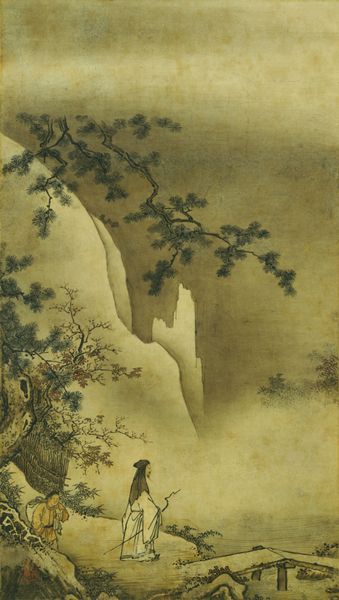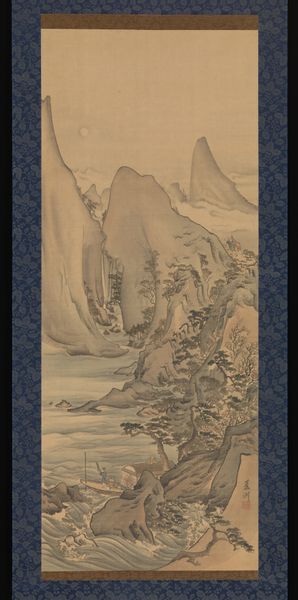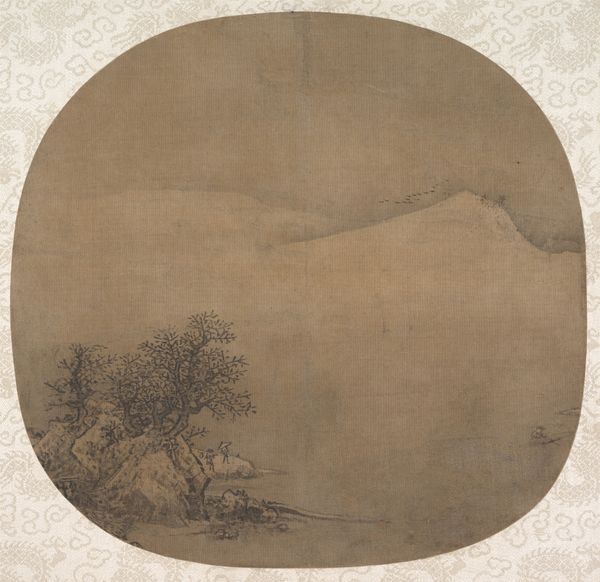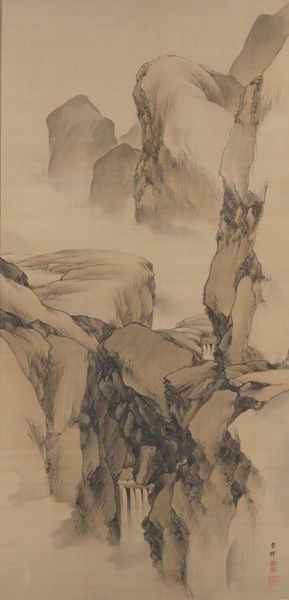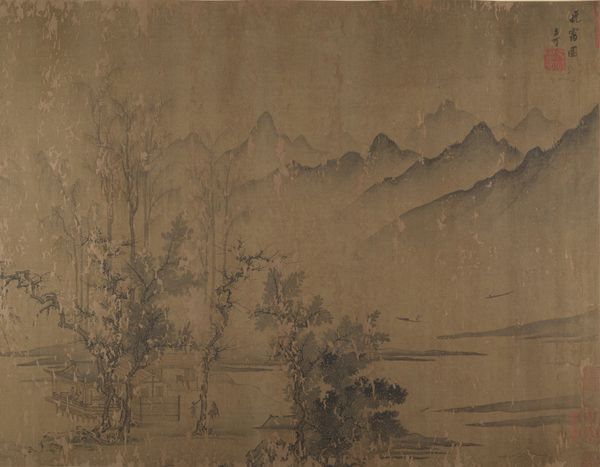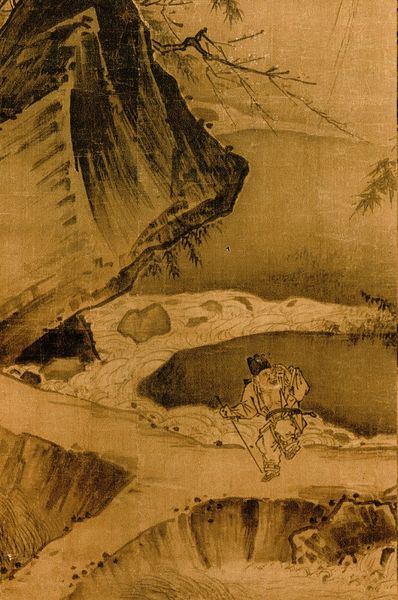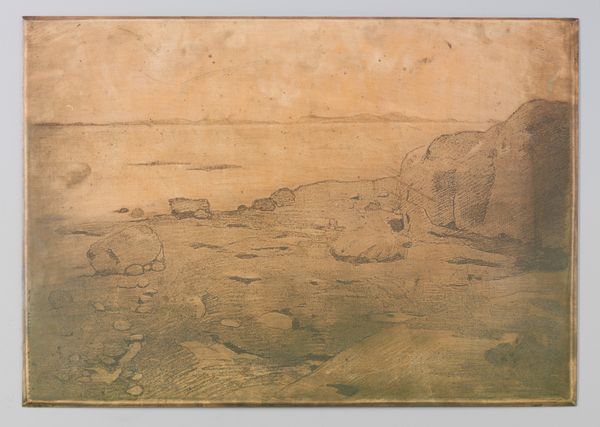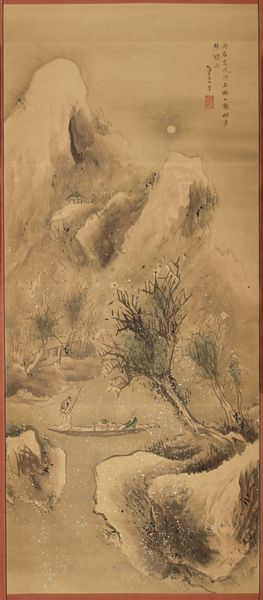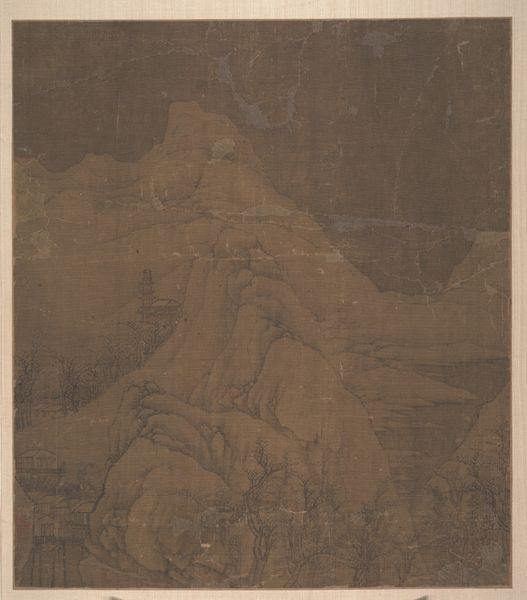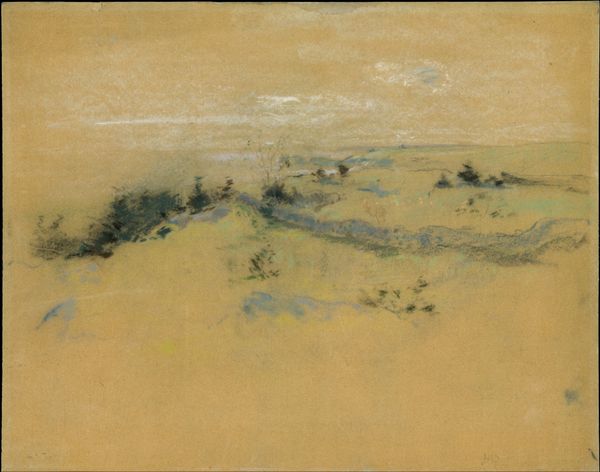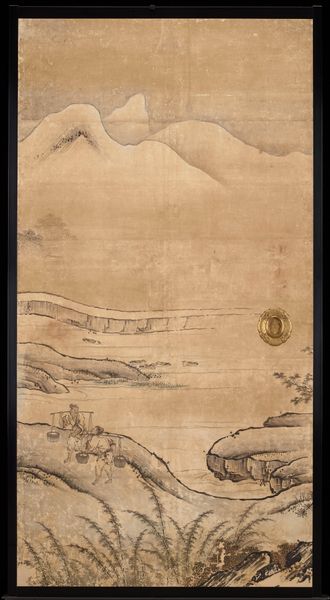
painting, paper, ink
#
painting
#
asian-art
#
landscape
#
figuration
#
paper
#
oil painting
#
ink
Copyright: Public domain
Editor: This landscape painting by Kano Masanobu, held at the Kyushu National Museum, uses ink on paper to create a misty scene. The fishing boat at the bottom is charming. What strikes you when you look at this piece? Curator: What interests me here is how Masanobu utilized such limited materials – ink and paper – to construct this expansive landscape. Consider the social context: ink painting, in its supposed simplicity, demanded intense labor and refinement in the production of both the ink itself and the artist's technique. What does the restraint in color palette tell us about access to materials, or perhaps, about the prevailing aesthetic values regarding craftsmanship during Masanobu's time? Editor: That's interesting. So, it's not just about the final image, but also the cultural understanding of the ink and paper used? Curator: Precisely. The *how* is as crucial as the *what*. The type of paper, the source of the ink, the brushes he favored - these are all clues that lead us to understanding the social and economic forces at play during the creation of the artwork. Even the scale of the painting might reflect economic constraints or, conversely, the patron’s desires. Do you notice how the layering of ink creates depth and texture, almost mimicking natural forms through sheer manipulation of the material? Editor: I do, now that you mention it. It's not just a representation, it's an *interaction* with the materials. Almost as if the materiality informed the final representation! Curator: Exactly! The value wasn’t merely in depicting a landscape, but in mastering the labor-intensive process and imbuing common materials with extraordinary significance. Perhaps, appreciating this link between production and representation allows us to reconsider notions of high art versus craft, since, in a way, the *making* is the art here. Editor: That’s a totally different way of looking at art – less about symbolism and more about… the supply chain, in a way! I’ll definitely keep this perspective in mind. Curator: Understanding artistic intention via an engagement with the artwork's materiality creates richer insights!
Comments
No comments
Be the first to comment and join the conversation on the ultimate creative platform.

